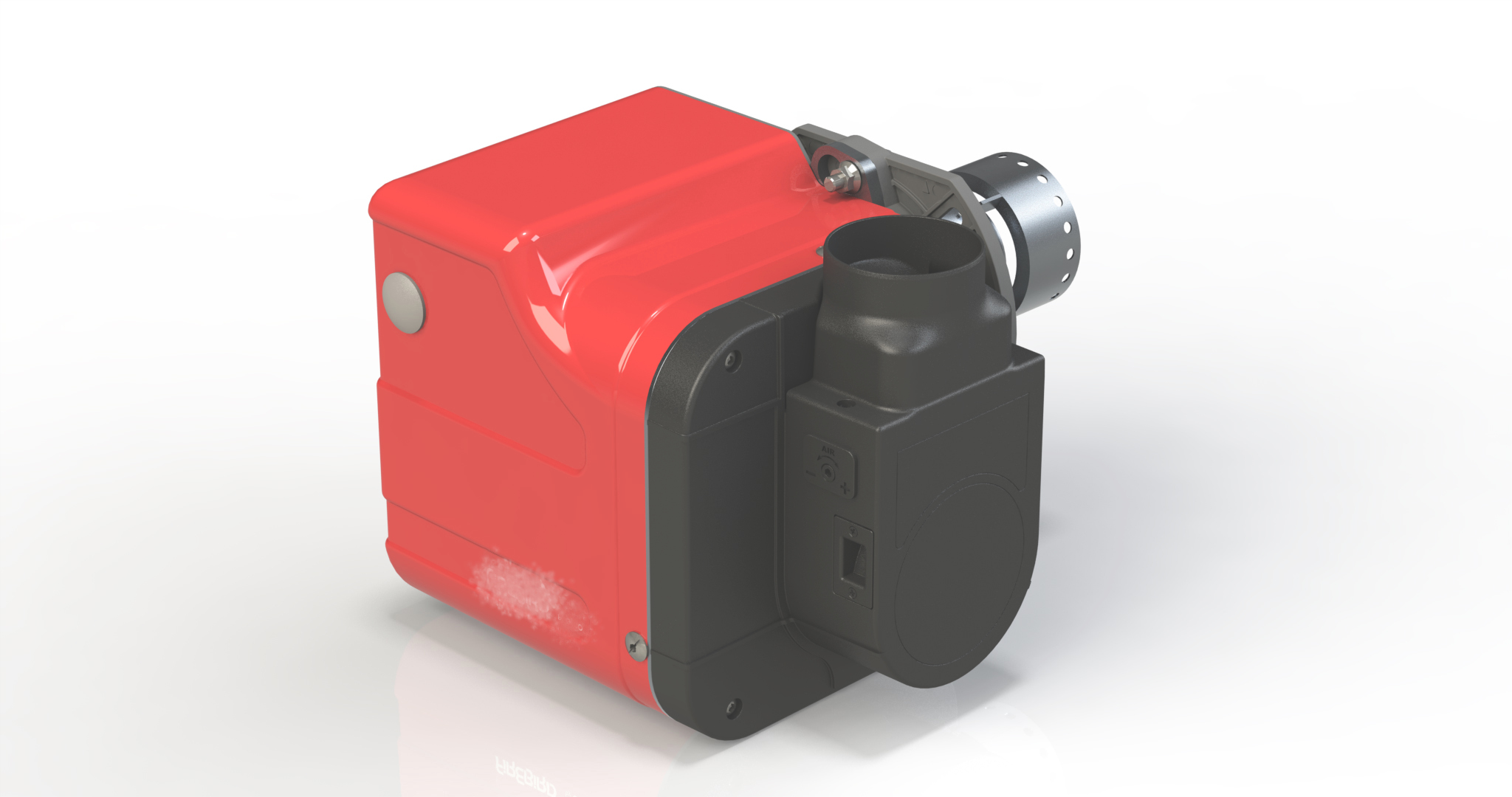Mechanical design of a low-power diesel burner

Working in close partnership with our customer, we undertook the mechanical design of a low-power diesel burner for boilers/heat exchangers for use in residential environments.
The term burner means a thermal machine designed to generate heat by means of controlled combustion of an oxidizing agent and fuel. The oxidizing agent is air, whereas the fuel can be a gas (natural gas, LPG), or liquid (diesel, naphtha, kerosene).
In this specific case, diesel was chosen as the fuel because it is a widely available heating fuel in several parts of the world, it is easy to source and it does not require a particularly complex plumbing system.
“Residential use” refers to heat outputs of 15 to 100 kW, i.e. for the heating of individual dwelling units or apartment blocks with centralized heating.
Burners of this type are normally built into the boiler/heat exchanger and sold directly by the manufacturer. The burner therefore needs to meet certain requirements:
- compact design so as to limit the amount of space it occupies in the home;
- lclean, modern lines;
- scope for customization according to the requirements of the customer, i.e. the manufacturer of the heating system
In addition to the above, we designed the diesel burner in such a way as to:
- make it easy to remove and replace damaged components;
- use a poka-yoke system to prevent incorrect fitting, i.e. design choices or equipment that limit the way a given operation can be carried out, so as to make the fitting of the burner error-proof;
- provide combustion settings (defined during laboratory testing, to ensure compliance with environmental emissions limits) by means of precise mechanical solutions.
For the mechanical design of this diesel burner, we carried out the following operations:
- Study of the initial layout and identification of the general styling
- Creation of burner components suitable for series production
- aluminum die-casting
- plastic molding
- plastic thermo-forming
- Study of all the variants of the electrical components
- Pre-series analysis and adjustments to ensure conformity with the required tolerances
- Creation of the assembly line and equipment to optimize assembly times
- Design of all the components and sub-units for assembly
- Drawing up the bills of materials for production (directly on the customer’s business management system)
Project duration
The mechanical design of the burner took 8 months.

